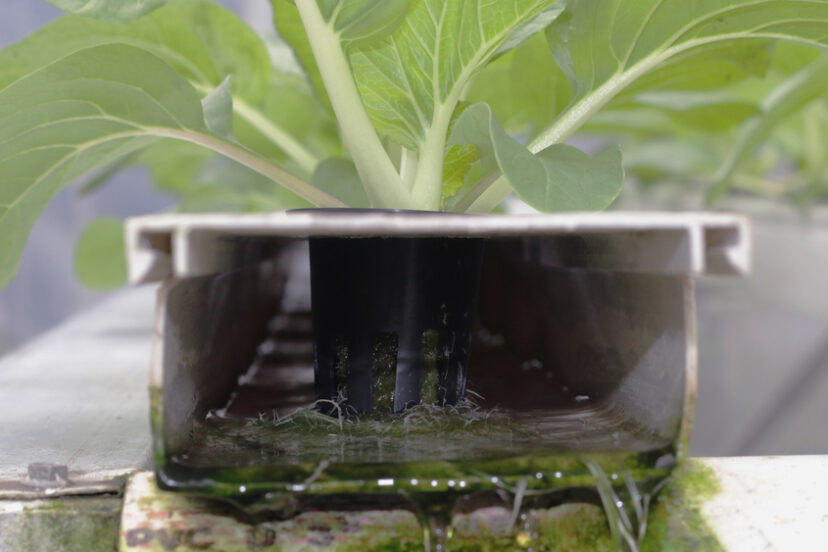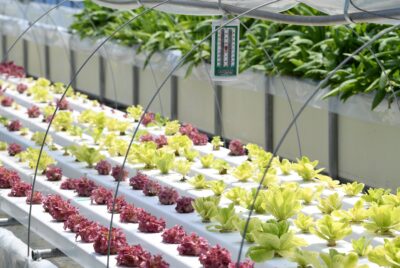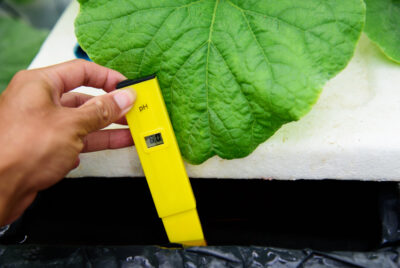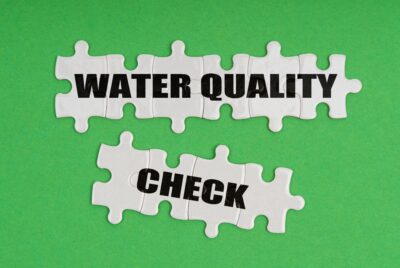NFT Hydroponic System
We may earn a commision from purchases made using our links. Please see our disclosure to learn more.
NFT Hydroponic System: Revolutionizing Crop Cultivation.
Introduction
As someone with a passion for sustainable farming practices, I am excited to share my knowledge and insights about the NFT (Nutrient Film Technique) hydroponic system. In this article, we will explore the concept of NFT hydroponics and its advantages. Additionally, we will discuss how to set up a successful system, provide optimization tips, and address common challenges faced by growers. So, let’s dive into the world of NFT hydroponics and discover how this innovative system can revolutionize crop cultivation.
What is an NFT Hydroponic System?
At its core, an NFT hydroponics system is a method of growing plants in a soilless environment. Furthermore, it involves a thin film of nutrient-rich water that flows continuously over the roots of the plants. This technique ensures a constant supply of essential nutrients, oxygen, and water to the plants, promoting their healthy growth and development.
Advantages of a NFT Hydroponic System
NFT hydroponics offers numerous advantages over traditional soil-based farming methods. Let’s explore some of the key benefits:
Increased crop yield
NFT hydroponics maximizes the use of available resources. Moreover, it allows plants to grow at an accelerated rate. With a constant supply of nutrients and water, plants can focus their energy on growth and produce higher yields compared to conventional farming.
Efficient use of resources when growing hydroponically
One of the most significant advantages of NFT hydroponics is its resource efficiency. Additionally, this system uses significantly less water compared to traditional soil-based agriculture. Furthermore, water is recirculated and reused in a closed-loop system. Additionally, the nutrient solution is delivered directly to the roots, minimizing wastage and optimizing nutrient absorption.
Reduced environmental impact
By eliminating the need for soil, NFT hydroponics reduces soil erosion and the use of harmful pesticides and herbicides. Furthermore, this method eliminates the risk of nutrient leaching, which can contaminate groundwater in traditional farming. Consequently, NFT hydroponics contributes to a more sustainable and eco-friendly agricultural approach.
Year-round cultivation
NFT hydroponics allows for year-round cultivation, regardless of external weather conditions. Furthermore, growers have the flexibility to control the growing environment, including temperature, humidity, and light. Thus, this ensures optimal conditions for plant growth and maximizing production throughout the year.
Setting Up an NFT Hydroponic System
Now that we understand the advantages of NFT hydroponics, let’s discuss the steps involved in setting up a successful system:
Choosing a suitable location
When selecting a location for your NFT hydroponic system, consider factors such as access to natural light and availability of electricity and water supply. Moreover, the overall space required should be taken into account. Ideally, choose a location with good ventilation to prevent the buildup of excess humidity.
Building the NFT channels
NFT channels are the heart of the system, where plants will be placed to grow. Additionally, construct the channels using food-grade materials, such as PVC or HDPE, ensuring they are sturdy and free from any leaks. Moreover, position the channels at a slight angle to allow the nutrient solution to flow smoothly.
Selecting the right hydroponic fertilizer
Choosing the appropriate nutrient solution is crucial for the success of your NFT hydroponics system. Furthermore, opt for a balanced solution that contains essential macronutrients and micronutrients required for healthy plant growth. Additionally, consider using a premixed commercial nutrient solution or formulating your own based on the specific needs of your crops.
Planting and maintaining crops
Carefully transplant seedlings or young plants into the NFT channels, ensuring their roots make contact with the nutrient film. Furthermore, regularly monitor the system to maintain the correct water flow and ensure the roots are receiving adequate nutrition. Additionally, prune and support the plants as they grow, optimizing their exposure to light and airflow.
Optimizing NFT Hydroponic Systems for Success
To achieve optimal results with your NFT hydroponics system, consider the following tips:
Monitoring and adjusting nutrient levels
Regularly monitor the nutrient solution’s pH and electrical conductivity (EC) levels to ensure they are within the appropriate range for your crops. Moreover, adjust the nutrient levels accordingly to prevent deficiencies or toxicities. Therefore, provides a balanced and optimal environment for plant growth.
Maintaining pH and EC levels
Maintaining the correct pH level is crucial for nutrient uptake and overall plant health. Furthermore, test the pH of the nutrient solution regularly and make necessary adjustments using pH up or pH down solutions. Similarly, monitor and adjust the EC levels to ensure the nutrient concentration is appropriate for the growth stage of your plants.
Preventing and managing diseases
Due to the soilless nature of NFT hydroponics, diseases, and pests can be minimized compared to traditional farming methods. However, it’s important to maintain strict hygiene practices. Additionally, regularly inspect plants for signs of disease or pests and promptly address any issues that arise. Furthermore, consider using beneficial insects or organic pest control methods to manage pests effectively.
Managing temperature and humidity
Maintaining an optimal temperature and humidity range is crucial for successful NFT hydroponics. Additionally, different plants have specific temperature and humidity requirements. Thus, ensure you provide the ideal conditions for your crops. Use fans, heaters, or cooling systems to regulate the temperature. Furthermore, consider using a dehumidifier or humidifier to adjust humidity levels as needed.
Common Challenges with a NFT Hydroponic System
While NFT hydroponics offers many benefits, growers may encounter a few challenges along the way. Here are some common issues and their solutions:
Algae growth in the system
Algae can thrive in the nutrient-rich environment of an NFT system, blocking the channels and affecting plant growth. To prevent algae growth, keep the system’s light exposure to a minimum. Moreover, use opaque or light-blocking materials for the channels. Additionally, regularly clean and sanitize the system to remove any potential algae spores.
Root blockages
Occasionally, roots may clog the NFT channels, hindering nutrient flow and potentially damaging the plants. Regularly inspect and clean the channels, ensuring they are free from any obstructions. Additionally, if root blockages persist, consider using a root barrier or incorporating a filter system to prevent roots from entering the channels.
Nutrient deficiencies
Monitoring nutrient levels is crucial to prevent nutrient deficiencies in your plants. Moreover, if you notice signs of nutrient deficiency, such as yellowing leaves or stunted growth, adjust the nutrient solution accordingly. Additionally, conduct regular water and nutrient analyses to ensure the proper balance of essential elements.
Pest control
While NFT hydroponics systems are generally less susceptible to pests, it’s still essential to implement preventive measures. Use sticky traps or introduce beneficial insects, such as ladybugs or predatory mites, to control common pests. Additionally, regularly inspect plants for any signs of infestation and take appropriate action promptly.
Conclusion
In conclusion, NFT hydroponics offers a sustainable and efficient approach to crop cultivation. Additionally, by harnessing the power of nutrient-rich water flowing over plant roots, this system maximizes yields, conserves resources, and reduces environmental impact. Furthermore, with careful planning and optimization, growers can achieve successful results and enjoy year-round cultivation. Embrace the future of farming with NFT hydroponics and unlock the potential of soilless agriculture.
FAQ’s About NFT Hydroponic Systems
Is NFT hydroponics suitable for all types of plants?
NFT hydroponics is suitable for a wide range of plants, including leafy greens, herbs, and some fruiting crops. However, plants with extensive root systems or high nutrient requirements may not thrive in this system.
Can I use organic nutrients in an NFT hydroponics system?
Yes, organic nutrients can be used in an NFT hydroponics system. Look for specifically formulated organic nutrient solutions or consider creating your own organic nutrient blends.
How often should I check the pH and EC levels in the system?
It’s recommended to check the pH and EC levels of the nutrient solution at least once a day. This will help you maintain optimal nutrient balance and address any imbalances promptly.
Can I automate the NFT hydroponics system?
Yes, you can automate this system using certain hydroponic instruments, controllers, and sensors. Automation can help maintain consistent nutrient delivery, monitor environmental conditions, and improve overall system efficiency.
Can I grow flowering plants or crops that require pollination in an NFT hydroponics system?
Yes, it’s possible to grow flowering plants in an NFT hydroponics system. However, you may need to manually pollinate the flowers using a small brush or implement techniques to facilitate pollination, such as gently shaking the plants.





Comments are closed.